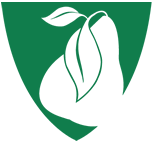Field guide to safer turkeys
Consumers should look for plant I.D. number - not just brand
For the first Thanksgiving season ever, consumers can actually choose safer turkeys based on government testing, according to the Center for Science in the Public Interest (CSPI), the country’s leading food-safety watchdog group. The organization today released the CSPI Field Guide to Safer Turkeys, highlighting the nine turkey plants that had the lowest rates of Salmonellacontamination in 2001, the most recent year for which data are available. Consumers can tell exactly which plant a turkey comes from by looking for a plant number inside (or near) the U.S. Department of Agriculture’s (USDA) seal on the packaging.
“The cleanest nine turkey plants have Salmonella-contamination rates under two percent— something that the industry had been saying couldn’t be done,” CSPI food safety director Caroline Smith DeWaal said at a National Press Club news conference in Washington. “Choosing safer turkeys is easier than ever before.”
The turkey plant with the lowest Salmonella-contamination rate in 2001—and the only plant to have a rate of zero percent—was plant number P-00286, the Perdue Foods facility in Washington, Indiana. All Perdue-brand turkeys come from this one facility, unlike some other brands, whose turkeys may come from several different plants. That, says CSPI, is why it makes sense to pay attention to the plant number. Honeysuckle White turkeys, for instance, could come from one of three different plants, ranging from a top-performing Cargill plant in California, MO (P-00961) with only a 1.8% contamination rate, to a facility in Ozark, AR (P-00511) with Salmonella rates five times higher.
Other brands with Salmonella rates under two percent include Zacky Farms, Northern Pride, and Golden Legacy. Two Wampler Foods plants (P-06710 and P-00244), one Jennie-O plant (P-00279), one Butterball plant (P-07174) also have rates under two percent.
The brands coming from plants with the highest levels of Salmonella-contamination were Farbest Foods (P-07769), Diestel, Diestel Petite, and Heidi’s Hens (P-09332), Sara Lee (P-00757), Plantation (P-00635), and Longmont (P-00552). Fortunately, none of those plants produce uncooked whole turkeys except for Diestel.
Although proper cooking will kill Salmonella, undercooking or cross-contamination in the kitchen can cause diarrhea, fever, abdominal cramping, nausea, or headaches, or even death. Each year, an estimated 1.3 million Americans get sick, 15,000 are hospitalized, and 500 die from Salmonella.
“While safe cooking and handling are very important in reducing the risk of Salmonellapoisoning, government and industry need to do more both on the farm and in processing plants to eliminate dangerous hazards,” DeWaal said. “Clearly, some producers are having success.”
To keep the risk of food poisoning as low as possible this Thanksgiving, CSPI urges consumers to avoid cross-contamination in the kitchen. Refrigerated turkeys should be double-wrapped so that their juices—which may contain Salmonella, Campylobacter, or other harmful bacteria—do not drip onto other foods. Counter tops, utensils, and anything that comes into contact with a raw (or only partially cooked) turkey should be scrubbed thoroughly in warm, soapy water. And, says CSPI, sponges used to clean up raw turkey should be disinfected in the dishwasher or in boiling water.
“Even turkeys from the best producers carry some risk for Salmonella, so no matter where you get your turkey, don’t take shortcuts in the kitchen when it comes to basic food safety,” DeWaal said. “Low Salmonella doesn’t mean no Salmonella.”
CSPI also urges home chefs to allow adequate time to thaw frozen turkeys—about 24 hours of defrosting (in the refrigerator, not on the counter) for every five pounds of turkey. Consumers should also allow adequate time to cook turkey, at temperatures no lower than 325 °F. The turkey is done when a meat thermometer inserted into the thick part of the thigh reads 180 °F.

